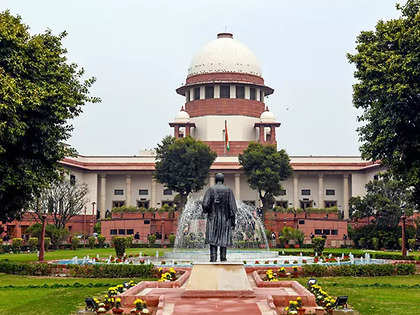Table of content
- What are the proposals of MIB?
- What Supreme Court acknowledge?
- What is the focus of SDC?
- What’s the current status of the Patanjali Ad case?
In an affidavit submitted to the Supreme Court on Friday, concerning the Patanjali misleading advertisement case, the Ministry of Information and Broadcasting (MIB ) suggested that self-declaration certificates (SDCs) should be restricted to advertisement for health products and services within the food and health sectors.
It has also recommended the establishment of a single portal for all food and health sectors.
Additionally, these certificates should only be submitted by private companies or advertisers rather than advertising agencies.
The MIB also suggested that start-ups and micro and small enterprises should be exempt from filing SDCs.
MIB Proposes Unified SDC
This recommendation was also included in an affidavit submitted to the Supreme Court, which was based on the feedback gathered during a court-mandated stakeholder consultation held on July 19.
The meeting was chaired by the Information and Broadcasting Secretary Sanjay Jaju and included representatives from the Department of Consumer Affairs, the Ministry of Ayush, the Ministry of Health and Family Welfare as well as other industry bodies and companies.
MIB also drew on submissions made by the industry associations involved in the case. Following the consultation, the MIB put forth six recommendations.
Among these, it suggested that a single self-declaration certificate be applicable across all other media platforms to ease the compliance burden.
Additionally, it recommended merging the two existing portals for SDC into one, instead of operating two separate portals as per the court’s 7th May order, to streamline the process and enhance user-friendliness.
The MIB further proposed that the self-declaration certificate could serve as a “blanket certification” for all advertisements planned for release within one year from the date of filing.
Alternatively, The SDC could be incorporated into the annual financial statement submitted by the end of the financial year.
Court Acknowledges Industry Burden
In its July 9 order, the division bench comprising Justice Hima Kohli and Sandeep Mehta recognized the burden, the court’s previous order had placed on the advertising industry, clarifying that it was not the intention of the court to make the industry suffer without any reason.

Among the suggestions the MIB received but chose not to recommend was the exclusion of programmatic ads, which are running on digital platforms through network agencies and real-time bidding.
Exclusion of user-generated content and online advertisement, exemption for members of the Advertising Standards Council of India (ASCI ) and Press Council of India ( PCI).
SDC Focus and Trial
The stakeholder also suggested that the scope of the SDC should be limited to medical-related ads with claims of healing or similar effects to specifically address concerns about misleading health claims or ayurvedic products, which are the focus of the current litigation.
The MIB recommended that the definition of food and health sector services and products be determined by the Ministry of Consumer Affairs, Food, and Public Distribution, the Ministry of Health, Family and Welfare, and the Ministry of Ayush.
The additional proposal includes considering the period from June 18, when the court-mandated SDCs until the final verdict should be considered as a “trial phase”.
Patanjali Ads Case – Contempt case dismissed
On Tuesday, August 13, the Supreme Court dismissed the Contemp case against Baba Ramdev and Acharya Balakrishna in the Patanjali misleading ads case.

Justice Hima Kohli and Sandeep Mehta issued the order, with Kolhi stating that the court accepted the apology from the parties but issued a stern warning against any future violations of court orders.
She emphasized that future affidavits must be truthful and warned that the court would take strict actions if the case of any violations occurred. The contempt proceedings and the notice issued to the contemnor were both closed.



